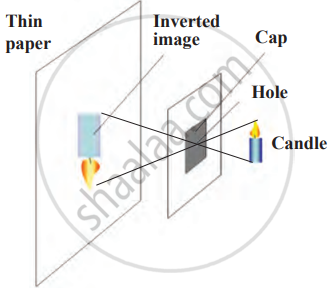Topics
Matter
Physical Quantities and Measurement
- Measurements
- Unit and Its Types
- Unit Systems
- Physical Quantities
- Rules and Conventions for Writing SI Units and Their Symbols
- International System of Units (Si System)
- Unit Prefixes
- Measurement of Length
- Devices for Measuring Length
- Measurement of Mass
- Devices for Measuring Mass
- Measurement of Time
- Devices for Measuring Time
- The Temperature and a Thermometer
- Measuring Temperature
- Area and It’s Unit
- Measurement of Area
Force
- Force - Push or Pull
- Effect of Force
- Types of Force: Contact Force
- Types of Force: Non-Contact Force
- Force of Friction
- Effects of Friction
- Kinds of Friction
- Advantages and Disadvantage of Friction
- Increasing and Reducing Friction
Energy
- Concept of Work
- Energy
- Machines
- Principle of Machine
- Efficiency of a Machine
- Simple Machines
- Mechanical Advantage
- A Lever
- Types of Levers
- A Pulley
- A Wheel and Axle
- An Inclined Plane
- A Wedge
- Screw
- Care of Machines
- Machines (Numerical)
Light
Magnetism
- Discovery of Magnets
- Classification of Magnets
- Magnetic and Non-magnetic Materials
- Magnet
- Magnetic Properties
- Magnetic Field
- Earth’s Magnetism
- Making a Magnet
- Electromagnet
- Making of an Electromagnet
- Applications of Electromagnets
- Care and Storage of Magnets
- Demagnetization of a Magnet
- Introduction
- Experiment
Introduction:
A pinhole camera is a simple optical device that captures images without using a lens. It consists of a light-tight box with a small hole (the "pinhole") on one side. Light passes through the pinhole and projects an inverted image of the scene onto the opposite side of the box. This basic camera demonstrates the principle of how light travels in straight lines and forms images, making it a popular tool for learning about the fundamentals of photography and optics.
Experiment
1. Aim: To understand how a pinhole camera works by projecting an inverted image of a light source.
2. Requirements: empty cylindrical box, thin white paper, tape, scissors, candle, cap for the cylindrical box.
3. Procedure
- Remove one cap from the cylindrical box and cover that side with thin white paper, securing it with tape.
- Make a small hole at the centre of the other cap and reattach it to the box.
- Light a candle and position it in front of the hole.
- Observe the image formed on the thin paper inside the box.
4. Conclusion: The experiment demonstrates the basic principle of a pinhole camera, where light travels through a small hole to project an inverted image on the opposite side. This occurs because light travels in straight lines, and when it passes through the small hole, the rays cross and form an inverted image of the source (candle) on the screen.

